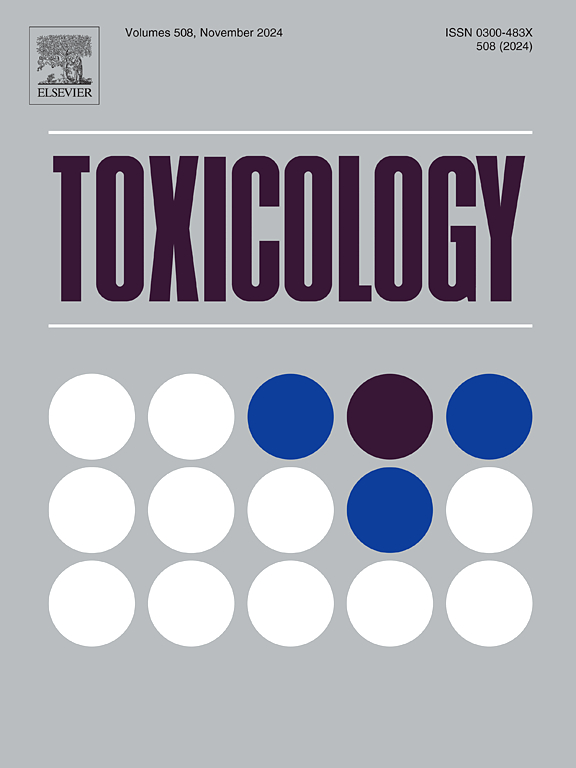Aflatoxin B1-induced hepatotoxicity through mitochondrial dysfunction, oxidative stress, and inflammation as central pathological mechanisms: A review of experimental evidence
IF 4.8
3区 医学
Q1 PHARMACOLOGY & PHARMACY
引用次数: 0
Abstract
Aflatoxin B1 (AFB1) is a class of mycotoxin known to contaminate agricultural products, animal feed and animal food products, subsequently causing detrimental effects on human and animal health. AFB1 is the most common and potent aflatoxin found in food and contributes significantly to liver injury as well as the development of hepatocellular carcinoma. Although the liver is a primary target organ for AFB1 toxicity and biotransformation, underlying mechanisms implicated in liver injuries induced by these mycotoxins remain to be fully elucidated for therapeutic purposes. This review aims to dissect the complexities of the pathophysiological and molecular mechanisms implicated in hepatotoxicity induced by AFB1, including mitochondrial dysfunction, oxidative stress and hepatic inflammation. Mechanistically, AFB1 disrupt mitochondrial bioenergetics and membrane potential, promotes mitochondrial cholesterol trafficking and induces mitophagy. Moreover, mitochondrial dysfunction may lead to hepatic oxidative stress as a consequence of uncontrolled production of reactive oxygen species and defects in the antioxidant defense system. Retrieved experimental evidence also showed that AFB1 may lead to hepatic inflammation through gut microbiota dysbiosis, the release of DAMPs and cytokines, and immune cell recruitment. Overall, these mechanisms could be utilized as potential targets to extrapolate treatment for liver injury caused by AFB1.
黄曲霉毒素 B1 通过线粒体功能障碍、氧化应激和炎症作为核心病理机制诱发肝中毒:实验证据综述。
黄曲霉毒素 B1(AFB1)是一类已知会污染农产品、动物饲料和动物食品的霉菌毒素,随后会对人类和动物的健康造成不利影响。AFB1 是食物中最常见、最强效的黄曲霉毒素,对肝损伤和肝细胞癌的形成有重要作用。虽然肝脏是 AFB1 毒性和生物转化的主要靶器官,但这些霉菌毒素诱发肝损伤的潜在机制仍有待充分阐明,以达到治疗目的。本综述旨在剖析 AFB1 引起肝毒性的病理生理和分子机制的复杂性,包括线粒体功能障碍、氧化应激和肝脏炎症。从机理上讲,AFB1 会破坏线粒体的生物能和膜电位,促进线粒体胆固醇的贩运并诱导有丝分裂。此外,线粒体功能障碍可能会导致肝脏氧化应激,这是活性氧生成失控和抗氧化防御系统缺陷的结果。经检索的实验证据还表明,AFB1 可通过肠道微生物群失调、DAMPs 和细胞因子的释放以及免疫细胞的招募导致肝脏炎症。总体而言,这些机制可作为潜在靶点,用于推断 AFB1 引起的肝损伤的治疗方法。
本文章由计算机程序翻译,如有差异,请以英文原文为准。
求助全文
约1分钟内获得全文
求助全文
来源期刊

Toxicology
医学-毒理学
CiteScore
7.80
自引率
4.40%
发文量
222
审稿时长
23 days
期刊介绍:
Toxicology is an international, peer-reviewed journal that publishes only the highest quality original scientific research and critical reviews describing hypothesis-based investigations into mechanisms of toxicity associated with exposures to xenobiotic chemicals, particularly as it relates to human health. In this respect "mechanisms" is defined on both the macro (e.g. physiological, biological, kinetic, species, sex, etc.) and molecular (genomic, transcriptomic, metabolic, etc.) scale. Emphasis is placed on findings that identify novel hazards and that can be extrapolated to exposures and mechanisms that are relevant to estimating human risk. Toxicology also publishes brief communications, personal commentaries and opinion articles, as well as concise expert reviews on contemporary topics. All research and review articles published in Toxicology are subject to rigorous peer review. Authors are asked to contact the Editor-in-Chief prior to submitting review articles or commentaries for consideration for publication in Toxicology.
 求助内容:
求助内容: 应助结果提醒方式:
应助结果提醒方式:


